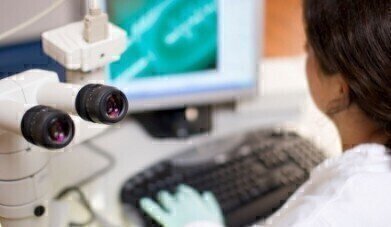Water/Wastewater
Applying Electron Beam Technology to Wastewater Treatment
Nov 20 2012
Earlier this year Headworks BIO (USA), biological wastewater treatment provider to municipal and industrial applications, and The National Center for Electron Beam Research (NCEBR) at Texas A&M University entered a research agreement looking at ways to harness E-Beam and X-ray technologies to treat municipal drinking water, wastewater, and industrial waste streams.
Electron Beam processing or electronic irradiation is a process which involves using electrons, usually of high energy, to treat an object for a variety of purposes. Possible uses for electronic irradiation include sterilisation, disinfection, to cross-link polymers, and modify materials.
This process has the ability to break the DNA molecules in microorganisms resulting in microbial death and rendering the product or sample sterile. E-Beam processing is currently in use commercially for the sterilisation of medical products, pasteurising food to protect against foodborne pathogens, developing aseptic packaging materials for foods, as well as in the disinfestation (the elimination of live insects) from grain, tobacco, and other unprocessed bulk crops.
To attain the global goal of an environmentally sustainable society in which organic material is successfully recycled back to arable land, it is crucial to develop effective procedures for the treatment of sewage sludge. The term “sewage sludge” or “biosolids” represents the insoluble residue produced during wastewater treatment and subsequent sludge stabilisation procedures, such as aerobic or anaerobic digestion.
To reduce the potential for adverse environmental and human impacts, it is critical that novel approaches be investigated so that municipal biosolids and effluent can be disinfected and stabilised to reduce the pathogen loads, reduce the levels of estrogenic compounds, and make the material suitable for land-application.
Disinfection of effluent and removal of estrogenic compounds allows for a variety of high value applications of the effluent.
The issue of health risks from land-applied biosolids and wastewater microbes is a key concern to municipal wastewater utilities. However, it should not be overlooked that biosolids are significant pools of energy substrates and nutrients as well. Headworks Bio hypothesis is that wastewater treatment plants of today have to become Sustainable Resource Recovery Facilities of the future. There is a compelling need to exploit different technologies to extract as much of the energy and nutrients as possible from different waste-streams.
E-Beam disinfection or sterilisation has significant advantages over traditional methods that are currently in use. The process is a quick switch on-switch off technology that does not use any radioactive materials, does not produce any radioactive waste, and is probably one of the most environmentally sustainable technologies since it uses commercial electricity. This technology can be used to treat material that is flowing through pipes or on conveyor belts.
Breaking down organic molecules such as benzene, an industrial solvent used in the production of drugs, plastics, and rubber and which is a known carcinogen, can require several treatments, known as digestions. By contrast, when you treat wastewater with an Electron Beam, the organics are oxidized and the microbial pathogens are inactivated. With the Electron Beam treatment, in one process you reduce a digestion from hazardous levels to trace levels that are benign.
Events
Apr 22 2024 Hannover, Germany
Apr 23 2024 Kuala Lumpur, Malaysia
Apr 24 2024 Sao Paulo, Brasil
May 05 2024 Seville, Spain
May 13 2024 Munich, Germany













